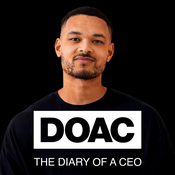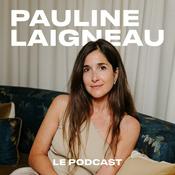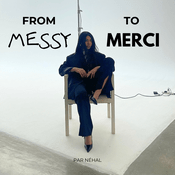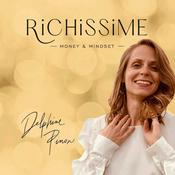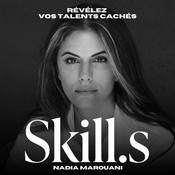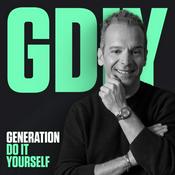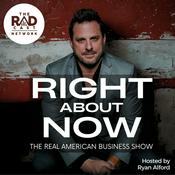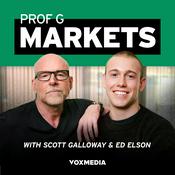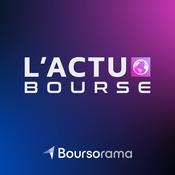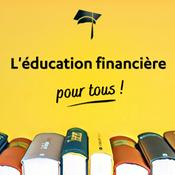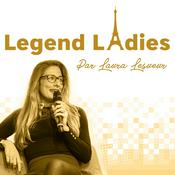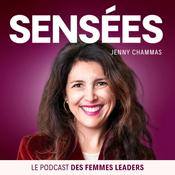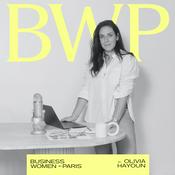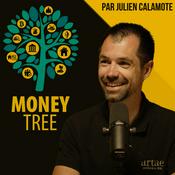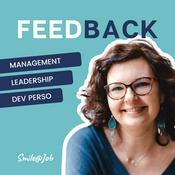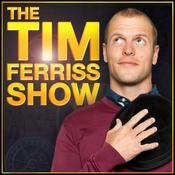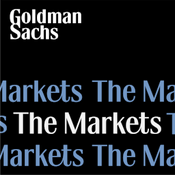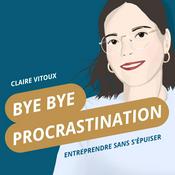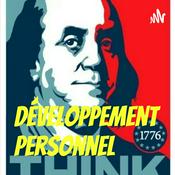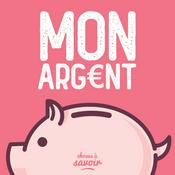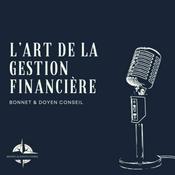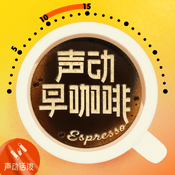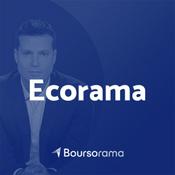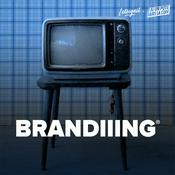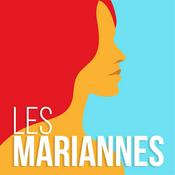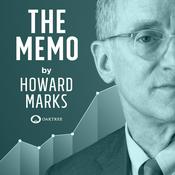Épisodes disponibles
5 sur 270
- Why We’re Irrationally Loyal to Amazon Prime2 out of 3 internet users in the USA pay for Prime. Yet, most of them are irrationally loyal. They feel like the subscription provides more cost savings than reality. Today, on Nudge, Richard Shotton and I explore the behavioural science behind Amazon Prime. We look at the sunk-cost fallacy and pennies-a-day effect to explain why so many are irrationally loyal to Amazon Prime. --- Subscribe to the Nudge Vaults: https://www.nudgepodcast.com/vaults Read Richard’s book: https://a.co/d/fEW7amQ Sign up for my newsletter: https://www.nudgepodcast.com/mailing-list Connect on LinkedIn: https://www.linkedin.com/in/phill-agnew-22213187/ Watch Nudge on YouTube: https://www.youtube.com/@nudgepodcast/ --- Today’s sources: Arkes, H. R., & Blumer, C. (1985). The psychology of sunk cost. Organizational Behavior and Human Decision Processes, 35(1), 124–140. Gourville, J. T. (1998). Pennies-a-day: The effect of temporal reframing on transaction evaluation. Journal of Consumer Research, 24(4), 395–403. Gourville, J. T., & Soman, D. (1998). Payment depreciation: The behavioral effects of temporally separating payments from consumption. Journal of Consumer Research, 25(2), 160–174. Roth, S., Robbert, T., & Straus, L. (2015). On the sunk-cost effect in economic decision-making: A meta-analytic review. Business Research, 8(1), 99–138.--------21:04
- Robert Cialdini: "Everyone Should Memorise This Persuasion Principle"His book Influence sold 5 million times. He’s known as the Godfather of Influence. He’s arguably the best-known behavioural science practitioner. And he’s finally (after years of pestering) joining me on Nudge. Ladies and gentlemen, today I present: Robert Cialdini and the persuasion principles that EVERYONE should memorise. --- Cialdini’s Influence Unleashed Event: https://cialdini.com/decevent Unlock the Nudge Vaults: https://www.nudgepodcast.com/vaults Read Cialdini’s bestseller Influence: https://amzn.to/4prHb7Y Read the new and expanded Influence: https://amzn.to/43TY0jI Read Pre-Suasion: https://amzn.to/48hA6Qr Read Yes! (Containing 60 Psyc-Marketing Tips): https://amzn.to/48ddNNf Join 10,142 readers of my newsletter: https://www.nudgepodcast.com/mailing-list Connect on LinkedIn: https://www.linkedin.com/in/phill-agnew/ --- Today’s sources: Agnew, P. (Host). (2021, November 22). #69: Reciprocity | How one nudge saved 246,184 lives [Audio podcast episode]. In Nudge – Marketing Science Simplified. YouTube. https://youtu.be/0QxcahCnoCs Cialdini, R. B. (1984). Influence: The psychology of persuasion. HarperCollins. Cialdini, R. B., Cacioppo, J. T., Bassett, R., & Miller, J. A. (1978). Low-ball procedure for producing compliance: Commitment then cost. Journal of Personality and Social Psychology, 36(5), 463–476. Deutsch, M., & Gerard, H. B. (1955). A study of normative and informational social influences upon individual judgment. The Journal of Abnormal and Social Psychology, 51(3), 629–636. Friedman, H. H., & Rahman, A. (2011). The effect of a gift-upon-entry on sales: Reciprocity in a retailing context. International Journal of Business and Social Science, 2(15), 155–162. Regan, D. T. (1971). Effects of a favor and liking on compliance. Journal of Experimental Social Psychology, 7(6), 627–639.--------27:52
- Why Everyone’s Suddenly Drinking Aperol SpritzIt’s the most popular cocktail in America. But prior to 2015, almost nobody had heard of it. So, how did Aperol Spritz become the world’s drink of choice? By leveraging a well-known behavioural bias in a totally unique way. Join Richard Shotton as he explains why suddenly everyone started drinking Aperol Spritz. --- Check out the Nudge Vaults: https://www.nudgepodcast.com/vaults Read Hacking The Human Mind: https://a.co/d/fEW7amQ Sign up for my newsletter: https://www.nudgepodcast.com/mailing-list Connect on LinkedIn: https://www.linkedin.com/in/phill-agnew-22213187/ Watch Nudge on YouTube: https://www.youtube.com/@nudgepodcast/ --- Today’s sources: Hallsworth, M., List, J. A., Metcalfe, R. D., & Vlaev, I. (2017). The behavioralist as tax collector: Using natural field experiments to enhance tax compliance. Journal of Public Economics, 148, 14–31. Keizer, K., Lindenberg, S., & Steg, L. (2008). The spreading of disorder. Science, 322(5908), 1681–1685. Milne, S., Orbell, S., & Sheeran, P. (2002). Combining motivational and volitional interventions to promote exercise participation: Protection motivation theory and implementation intentions. British Journal of Health Psychology, 7(2), 163–184. von Restorff, H. (1933). Über die Wirkung von Bereichsbildungen im Spurenfeld. Psychologische Forschung, 18(1), 299–342.--------24:25
- Five science-backed tips to become a better leaderMy guest on today’s episode of Nudge has spent decades studying leaders. I asked Prof. Adam Galinsky to share his top five (evidence-backed) leadership tips. Want to become a better leader? This is the episode for you. --- Watch the bonus episode: https://nudge.kit.com/a53ff22931 Read Adam’s book: https://amzn.to/4htZCGc Sign up for my newsletter: https://www.nudgepodcast.com/mailing-list Connect on LinkedIn: https://www.linkedin.com/in/phill-agnew-22213187/ Watch Nudge on YouTube: https://www.youtube.com/@nudgepodcast/ --- Blunden, H., Kristal, A. S., Whillans, A. V., Yoon, J., Burd, K., Bremner, S., & Yeomans, M. (2025). Eliciting advice instead of feedback improves developmental input. Organizational Behavior and Human Decision Processes, 193, 104343. Chou, E. Y., Halevy, N., Galinsky, A. D., & Murnighan, J. K. (2017). The Goldilocks contract: The synergistic benefits of combining structure and autonomy for persistence, creativity, and cooperation. Journal of Personality and Social Psychology, 113(3), 393–412. Hoff, M., Rucker, D. D., & Galinsky, A. D. (2025). The vicious cycle of status insecurity. Journal of Personality and Social Psychology, 128(1), 101–122. Leonardelli, G. J., Gu, J., McRuer, G., Medvec, V. H., & Galinsky, A. D. (2019). Multiple equivalent simultaneous offers (MESOs) reduce the negotiator dilemma: How a choice of first offers increases economic and relational outcomes. Organizational Behavior and Human Decision Processes, 152, 64–82. Liljenquist, K. A., & Galinsky, A. D. (2007). Turn your adversary into your advocate: Strategic requests for advice can transform disputes into amiable problem-solving ventures. Kellogg Insight. Northwestern University. Majer, J. M., Trötschel, R., Galinsky, A. D., & Loschelder, D. D. (2020). Open to offers, but resisting requests: How the framing of anchors affects motivation and negotiated outcomes. Journal of Personality and Social Psychology, 119(3), 582–599. Wu, S. J., & Paluck, E. L. (2022). Having a voice in your group: Increasing productivity through group participation. Behavioural Public Policy, 9(1), 192–211.--------20:35
- What Marge Simpson Can Teach You About LeadershipIn 1989, The Simpsons released Itchy & Scratchy & Marge. It’s a classic Simpson’s episode filled with slapstick humour, dry jokes, and smart gags. And yet, behind all the humour, there’s an important lesson about leadership. Today, Chief Behavioural Scientist Micheal Hallsworth explains what Marge Simpson can teach you about leadership. --- Read the Hypocrisy Trap: https://amzn.to/47vhxbj Sign up for my newsletter: https://www.nudgepodcast.com/mailing-list Connect on LinkedIn: https://www.linkedin.com/in/phill-agnew-22213187/ Watch Nudge on YouTube: https://www.youtube.com/@nudgepodcast/ --- Today’s sources: Barrick, E. M., Barasch, A., & Tamir, D. I. (2022). The unexpected social consequences of diverting attention to our phones. Journal of Experimental Social Psychology, 101, Article 104344. Jordan, J. J., Sommers, R., Bloom, P., & Rand, D. G. (2017). Why do we hate hypocrites? Evidence for a theory of false signaling. Psychological Science. Thomas, O., & Reimann, O. (2023). The bias blind spot among HR employees in hiring decisions. German Journal of Human Resource Management, 37(1), 5–22. Tokunaga, R. S. (2010). Following you home from school: A critical review and synthesis of research on cyberbullying victimization. Computers in Human Behavior, 26(3), 277–287--------21:14
Plus de podcasts Business
Podcasts tendance de Business
À propos de Nudge
Nudge is the UK's #1 marketing podcast, breaking down the hidden psychology behind what we do and why we do it. No BS, just smart, science-backed insights that actually work.
Site web du podcastÉcoutez Nudge, The Diary Of A CEO with Steven Bartlett ou d'autres podcasts du monde entier - avec l'app de radio.fr
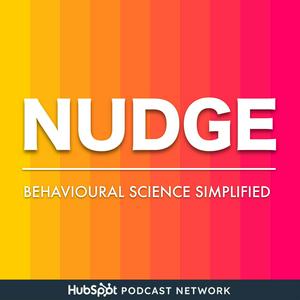
Obtenez l’app radio.fr gratuite
- Ajout de radios et podcasts en favoris
- Diffusion via Wi-Fi ou Bluetooth
- Carplay & Android Auto compatibles
- Et encore plus de fonctionnalités
Obtenez l’app radio.fr gratuite
- Ajout de radios et podcasts en favoris
- Diffusion via Wi-Fi ou Bluetooth
- Carplay & Android Auto compatibles
- Et encore plus de fonctionnalités


Nudge
Scannez le code,
Téléchargez l’app,
Écoutez.
Téléchargez l’app,
Écoutez.
